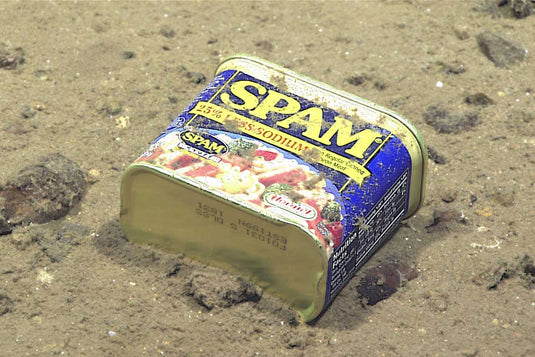5 MIN READ
4-02-2024
The Trenches
Of The Unknown
Mikaela Walsh, 4ocean Research Analyst
What is down there?
The world may never know!
Swimming in the middle of the ocean, you look down below you, but there is nothing. Just ongoing deep blue and a curiosity of what exactly is down there? Two hundred meters below the ocean's surface lies the world's most misunderstood area. We know more about Mars and the moon than the world that lives within our oceans. And, likely, we will never fully understand what lies in these depths.
- The Epipelagic Zone, The Sunlight Zone. This is the surface of the ocean. This is where biodiversity flourishes and is up to 200 meters deep.
- The Mesopelagic Zone, The Twilight Zone. This is where sunlight begins to dwindle. This region accounts for 200 to 1,000 meters below the ocean's surface.
- The Bathypelagic Zone, The Midnight Zone. This region is entirely dark, anywhere from 1,000 to 4,000 meters deep.
- The Abyssopelagic Zone, The Abyss. This zone is 4,000 to 6,000 meters below the surface. The famous Titanic boat sinking is found in this zone.
- The Hadal Zone, The Trenches. This is anywhere from 6,000 to 11,000 meters below the surface. To put this into perspective, Mount Everest is 8,838 meters above sea level. This zone is almost entirely undiscovered.
![shutterstock_1640168446 [Converted]-01.png__PID:75603070-cc08-4a20-835a-d0a77e8f82ca](https://cdn.shopify.com/s/files/1/0996/1022/files/shutterstock_1640168446_Converted_-01.png?v=1711552808)
These pitch-black waters are unlike any other place on our planet. Since this twilight zone is abandoned from light, it is also very frigid in these waters. The cold water sinks to the bottom of the ocean because it is more dense than warm water, which also causes this area to have incredibly high pressure. Pressures have been measured up to 110 times more than the pressure of our atmosphere. Pressures in the deepest part of the ocean, the Hadal Zone, are 1,100 times greater than the pressure of the atmosphere. This region has been challenging to explore due to the distance below the surface, temperature, pressure, and the complete absence of light. Exploring these world regions is difficult, but the newest estimates can help us understand the world living beneath the ocean's surface. In the Hadal Zone, the trenches lay the deepest points in the ocean.
- Arctic Ocean: Molloy Hole, in the Fram Strait, measures 5,669 meters below sea level.
- Indian Ocean: an unnamed deep, the Java Trench, measures 7,290 meters below sea level.
- Southern Ocean: an unnamed deep, in the South Sandwich Trench, measures 7,385 meters below sea level.
- Atlantic Ocean: Milwaukee Deep, in the Puerto Rico Trench, measures 8,408 meters below sea level.
- Pacific Ocean: Challenger Deep, in the Mariana Tench, measures 10,925 meters below sea level.
![shutterstock_2073433361-[Converted].jpg__PID:cc08fa20-035a-40a7-be8f-82ca6b0103ea](https://cdn.shopify.com/s/files/1/0996/1022/files/shutterstock_2073433361-_Converted.jpg?v=1711553548)

The Deep Sea Collection:
Bracelets made with
glow-in-the-dark cord
Shop now + Clean the OceanThis brings up the spooky question, what is down there? We do know one thing: there is life in these depths. The deep sea is a magnificent place full of intense biodiversity and continuously full of groundbreaking discoveries. Previously unimaginable, scientists have been on a mission to determine what creatures live down here, if any. The Marianna Trench has been explored to its depths, where researchers have found life at the deepest points. An amphipod organism, Hirdondellea gigas, dwells in these deep waters. These shrimp-like organisms have evolved to be able to eat wood! Digesting wood is a very hard task that organisms have not widely used but they can take energy out of the wood. This is the wood in our forests that sinks to the bottom of the ocean. Snail fish have been discovered in the Hadal Zone of the ocean. Luckily, scientists were able to capture a specimen and hoist it to the surface for further examination. These fish are commonly found worldwide, but they have been able to withstand the massive pressure in these trenches. They do not have scales, and their skin is made of transparent gelatin, enabling vision to the muscles and organs. It is thought that they cannot see with their small eyes due to the immense darkness, and they have sensors along their mouth and head to detect food in the water. Sea Cucumbers have also been found at the deepest depths of our ocean, which were previously not thought to be able to withstand life.
These organisms are hypothesized to have originated from Antarctica. Antarctica is at the top of the earth, where temperatures are fiercely frigid, and the organisms that live here have unique adaptations. The currents that run off Antarctica follow alongside the Mariana Trench, where these organisms have been found. The organisms are believed to have originated from Antarctica and made their way down to the Mariana Trench, further adapting and evolving to the pressure of the depth. Things that are similar between the two areas are low food sources and frigid temperatures. This deep region continuously contains novel and fascinating news. Research of these profound depths will continue and highlight groundbreaking discoveries. Scientists are tirelessly trying to navigate this region and the potential different forms of life that inhabit this virtually unreachable destination. Only a few dozen people have traveled 10,000 meters to the Challenger Deep in the Mariana Trench. In 1960, Don Walsh and Jacques Piccard were aboard the first expedition with humans in the Trieste. These two men aboard the submersible claimed they saw a fish swim by at the bottom of the trench. Scientists have yet to be able to confirm or deny if fish can live in this region. Many questions still need to be answered. Are megalodons hiding in these trenches, awaiting return to the Epipelagic zone? We will just have to wait and find out!

The Deep Sea Collection:
Bracelets made with
glow-in-the-dark cord
Shop now + Clean the Ocean
You May Also Like



